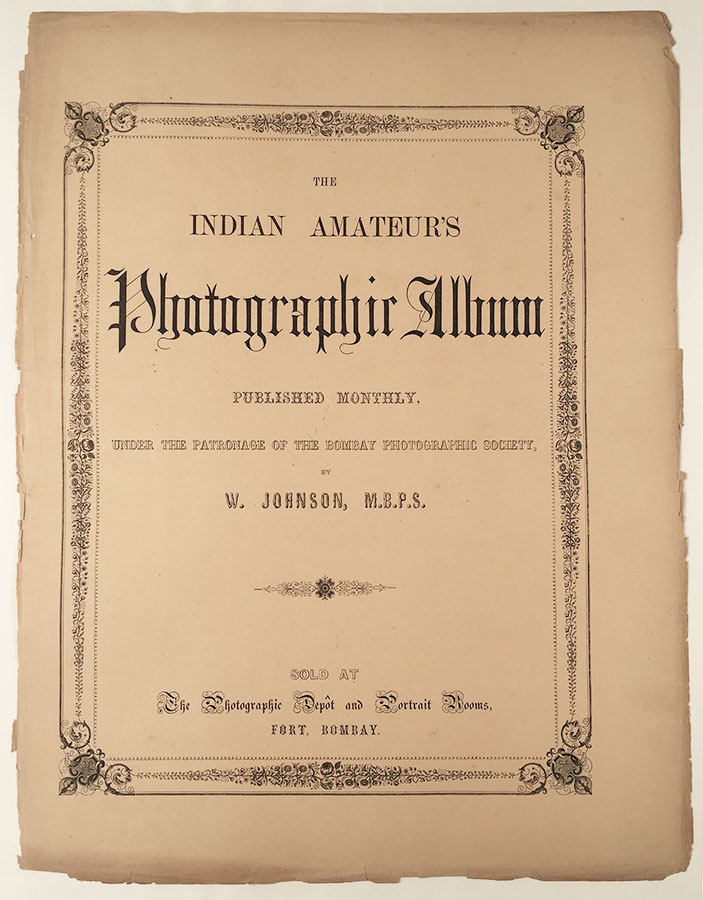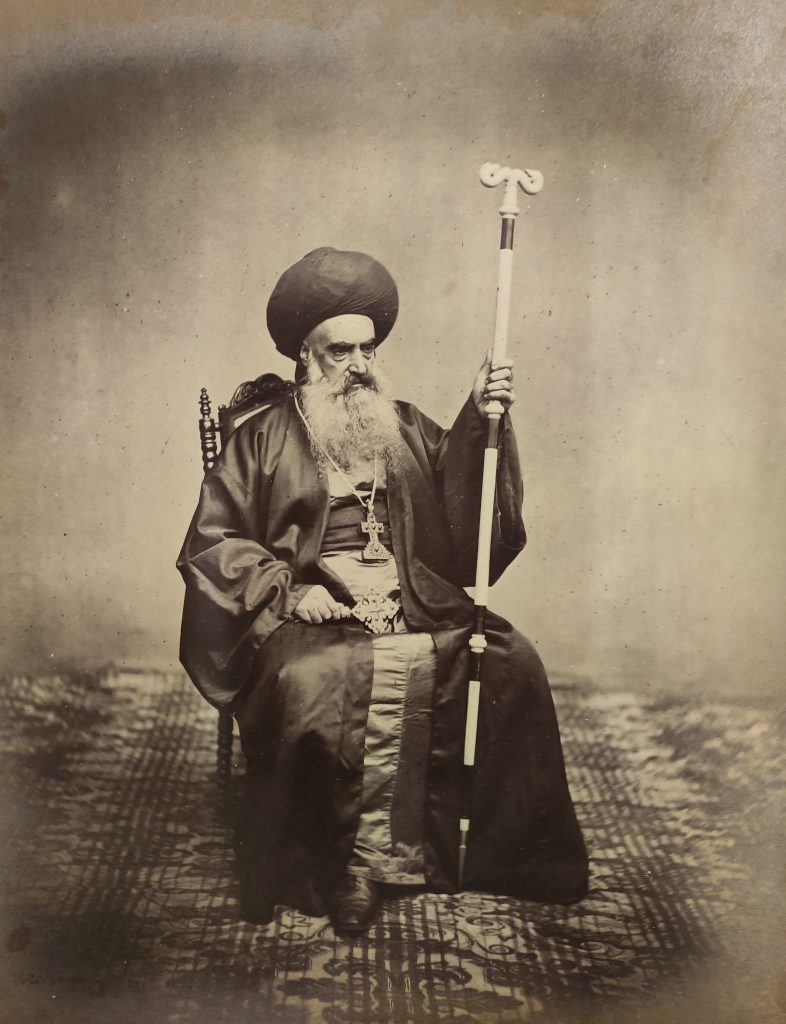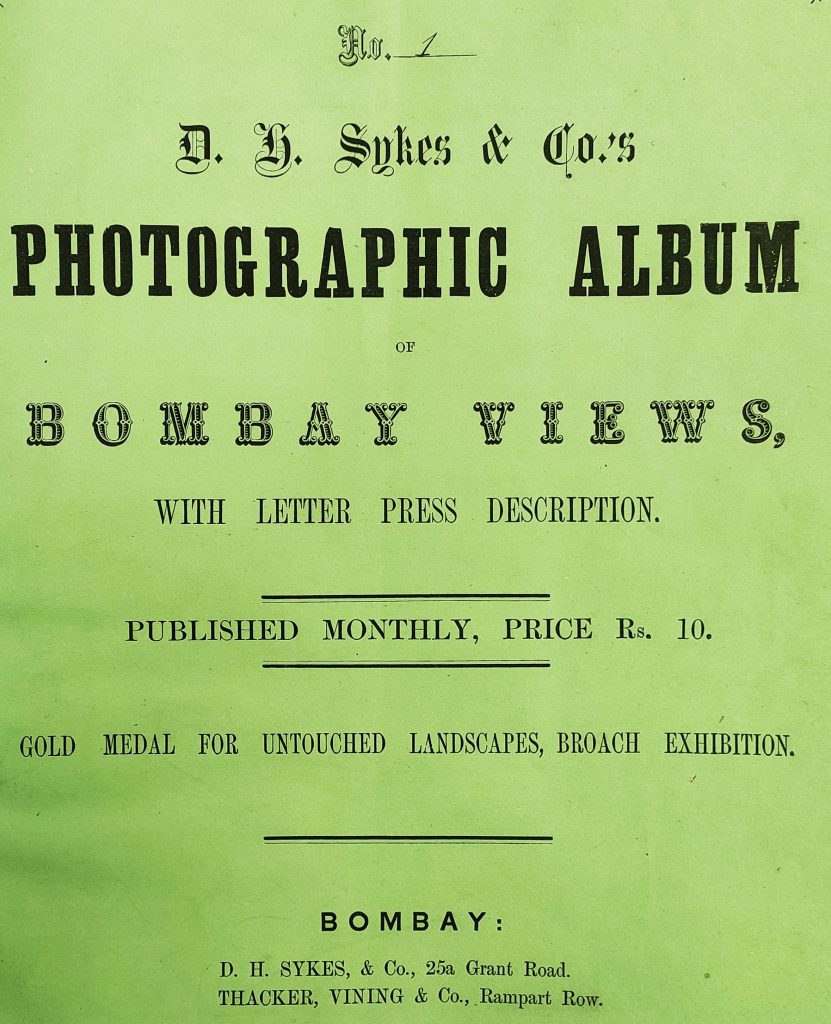

While the focus of this research project has explicitly been a period in print history, starting in the 1940s, due to a proliferation of photography periodicals during this time, this week I go much further back into history, around the time when photography first arrived in India.
The Photographic Society of Bombay, the first of its kind in India, was established in the year 1854, for the promotion and advancement of the Science and Art of Photography. As a group consisting mostly of Englishmen and a few wealthy Indians, the organisation functioned as a space for mostly amateur photographers to discuss their experiments with the form, its printing, technique, etc through monthly meetings, exhibitions and exchanges with other photographic societies in Britain. But also immediately after its establishment, its members felt the need for a printed journal, “to place a record in the hands of each Member, and the interested public, of our periodical meetings.” This impetus for printed publication, hints at both a desire for expanding the scope of photography and the likelihood of there also being an enthusiastic public.
Due to the nature of photographic practice at the time, the publication is a predominantly textual one; consisting of minutes of the meetings, details of developments in photographic and printing processes, availability of chemicals, etc; focussing almost entirely on the scientific aspects of the art form. Photographs resulting from these processes could only be viewed through exhibitions organised by the society. And yet, owning photographs or collecting specimens of this new technique, were still seen as desirable, as may be gathered from the words of Dr George Buist, an early member of the Society who proposed “collecting or preparing first rate Photographic Pictures for sale.” to be purchased by people leaving for England from India. Thus the ethnographic functions of photography were already revealing themselves and the desire to capitalise on it was being felt.

In the year 1856, the first issue of the Indian Amateur’s Photographic Album was published, which embodied these very ideas proposed by Dr Buist. A serialised, subscription based publication, the Indian Amateur’s Photographic Album, consisted of three images per issue, based on a wide variety of subjects to portray India—from architecture to costumes—accompanied by a description of each of these images. An excellent and detailed account of this publication, looking at twenty-four issues of this publication is Staurt Macmillan’s 2011 Thesis submitted to Ryerson University, Toronto, titled Colonial Representations of British India: A Description and Analysis of the First Twenty-Four Issues of The Indian Amateur’s Photographic Album.
Contained within a paper sleeve, with the title letterpress on the cover, each issue consisted of three images—one from a regular feature called Costumes and Characters and two other images of either architectural or landscape views. Though the publication acknowledges being under the patronage of the Bombay Photographic Society, it is unclear what the nature of this patronage was and the only direct links between the two seem to be that the frequent contributors to the album—William Henderson, William Johnson, Henry Hinton and Dr GR Balingall—were also members of the Photographic Society.


Of particular interest to this project are the models of subscription that the Indian Amateur’s Photographic Album popularised. In the years to come, it wouldn’t be uncommon for the photographers like Raja Deen Dayal and Felice Beato to release their own album of photographs, some of which like the royal court scenes would be available at regular intervals. Not only does this hint at a dedicated public for the consumption of photography but also an investment in the art of photographic printing. With publications like the Indian Amateur’s Photographic Album, the curation of the three images and the network of photographers that became regular contributors to the publication, creates a unique ecosystem for photography that would then be popularised and made widely available with the onset of the printed magazine.
The Indian Amateur’s Photographic Album, was not only seen as an aesthetic object but was also engaged with through critical discourse. A report from the The Bombay Times and Journal of Commerce from 1857, criticises the last issue of the publication for not being “as good as the earlier issues” (with the exception of an image of Jooma Masjid, Bombay) that displays a critical engagement with the field which doesn’t seem to have been made available through the Journal of Photographic Society of Bombay, which was still a scientific journal, for the most part, tending more towards a skilled audience.


While the audience for the album were likely to have been foreigners travelling to India, the desire to own photographs, and hence perfecting the art of printing them, was a consideration that was retained with the illustrated magazines. The draw for several of these magazines, such as the Illustrated Weekly or the Indian Pictorial Education, seemed to have been featuring full size, rich, photographic images as a part of the magazine, available at cheap prices. Eventually, the draw would become full-size colour illustrations.
The creation of a public for a regular serialised publication on photography, the emphasis on photographic printing and the notion of collectibility may have been introduced with Indian Amateur’s Photographic Album which ran successfully for three years over thirty-six installments consisting of 108 photographs. But the true revolution for photography in print was to come with the photographic printing processes that could mass-produce it.